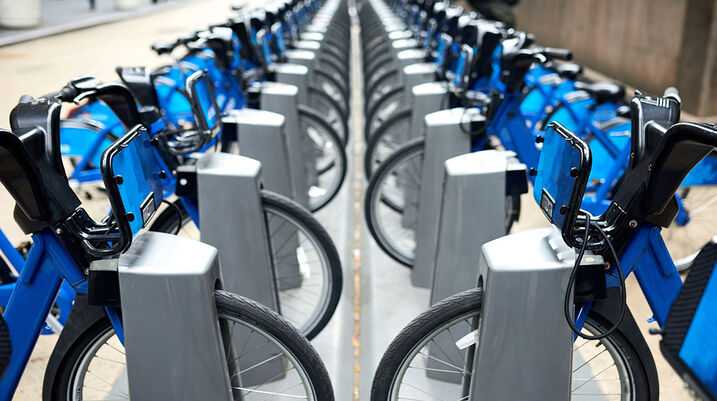New York City has had its share of ups and downs when it comes to public transportation. Trains that are out of service for a lengthy period of time and slow-crawling buses are just a few issues that New Yorkers are familiar with. However, this year our city has seen big improvements to its public transportation systems.
The Metropolitan Transportation Authority provides 2.73 billion trips each year, moving New Yorkers by subway, bus, and railroad. However, traffic congestion and construction-related disruptions are contributing to declining average travel speeds across the city according to TransitCenter, a foundation dedicated to urban mobility.
Fortunately, New York has worked to combat these problems by expanding existing transit and implementing new options for commuters to get around.
Here we review some of New York’s biggest public transportation improvements in 2016.
Citi Bike Expansion
This year saw the expansion of the city’s Citi Bike program, a bike share system that has become an essential part of New York’s transportation network. On Aug. 8, Citi Bike began installing more than 139 new stations from 110th Street in Manhattan to the neighborhoods of Red Hook and Prospect Park in Brooklyn, according to StreetsBlog.
With these new terminals, Citi Bike will grow from 470 stations and 8,000 bikes to 600 stations and 10,000 bikes. The city hopes to further expand the service into western Queens and into parts of central Brooklyn.
Citi Bike riders have noticed that the bike service offers several safety benefits. The bikes are slower than personal bikes and their bright blue color is more noticeable to drivers, according to the New York Times. These benefits help to prevent accidents from occurring on city streets.
Citi Bikes also provides bike riders quick access to bike lanes. In conjunction with the Citi Bike Expansion, the New York Department of Transportation is also putting down new north-south protected lanes for riders, so that they can move freely and not have to worry about cars entering their path.
M23 Select Bus Service
On Nov. 7, the city and the MTA launched M23 Select Bus Service with the aim to streamline service for thousands of riders commuting to 23rd Street subway stops, parks, and institutions, according to AM New York. The service will help to reduce travel times from 10 to 30 percent.
Over the past few years, the M23 was deemed one of the slowest city buses, with an agonizing speed of 3.7 miles per hour, according to AM NY. To speed up the M23 bus service, two lesser-used stops have been removed from the route and riders can now use any of the multiple doors on the bus.
The DOT has also installed bollards and bus lane cameras along certain portions of the bus lane to keep cars out, according to AM NY.
The launch of the M23 SBS route is a step toward Mayor Bill de Blasio’s plan to reach 20 Select Bus Service routes citywide, according to NY 1 News. “In 2013, we committed ourselves to expanding the number of communities that see the benefits of Select Bus Service. SBS saves commuters precious time while also making streets — including the newly added 23rd Street route — much safer, suiting our Vision Zero goals,” Mayor de Blasio said in a statement.
Near-Completion of the 2nd Avenue Subway
The Second Avenue Subway line is always "almost done," but the MTA is for real this time. No joke. The first three stations that are expected to open before the end of the year are at East 72nd, East 86th and East 96th Streets, according to Crain's New York Business.
The near-completion of the line represents massive promise for the city, as it will help to relieve crowding and delays on subway lines along Lexington Avenue, according to AM NY. The line will span 8.5 miles from 125th street in Harlem to Hanover Square in Downtown Manhattan and will allow commuters easier access to mass transit on the city's East Side.
The new stations will have Wi-Fi and elevators, escalators, and wheelchair accessibility, according to AM NY. It will also have climate control to maximize customer comfort while commuters wait on subway platforms.
With these public transportation improvements, the city is hoping to provide New Yorkers with a pleasurable commute and possibly eliminate the need to drive everywhere. However, you should still be careful, because car accidents can happen when you’re crossing the street to get to a bus or riding a bike.
If you or a loved one were injured due a driver’s negligence, we can help. Read more to learn what our New York car accident attorneys can do for you. If you are ready to pursue a claim, fill out our free, no-risk case evaluation form today.
